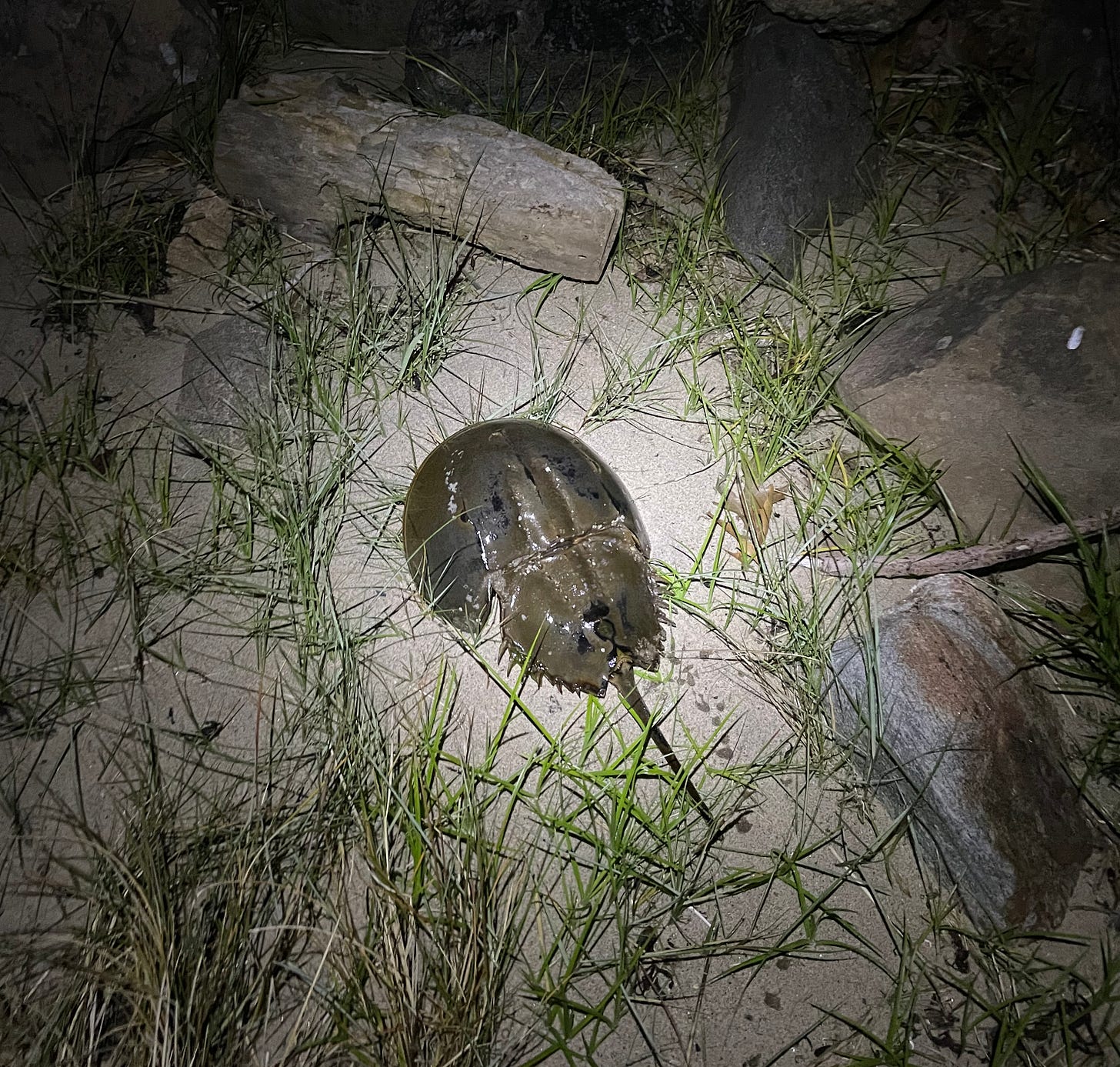Photograph by the author from a community science horseshoe crab survey
Limulus polyphemus is the official name for the Atlantic horseshoe crab. These creatures and their ancestors have been on Earth longer than dinosaurs. They’ve lived through all five mass extinctions, surviving on this planet for some 445 to 475 million years. Though everyone calls them crabs, they’re actually a different kind of arthropod—more closely related to scorpions and spiders. As a child, I became fascinated with limulus and the way they carry other species, becoming itinerant microcosms of aquatic invertebrate life. Over time, mature horseshoe crabs accumulate small cities of marine creatures on their shells, including colonies of bacteria, snails, worms, slipper shells, barnacles, sponges, fringed ghost anemones, and the quick, pink tentacles of sea strawberries. Naturalist Dave Grant writes that some members of this “moving menagerie” rely on the horseshoe crab to hitch a ride out of the silt. Other species simply settle on the shells of these crabs as they move across the bottom of the sea, making the horseshoe crab a “living fossil” with the contents of a tide pool on its back. They’re comfortable in the depths of Atlantic bays, but they can survive temporarily in air. When they come up on land to mate, they have book gills whose folded, page-like membranes can keep them alive for as long as the book stays damp.
Keep reading with a 7-day free trial
Subscribe to Book Post to keep reading this post and get 7 days of free access to the full post archives.




